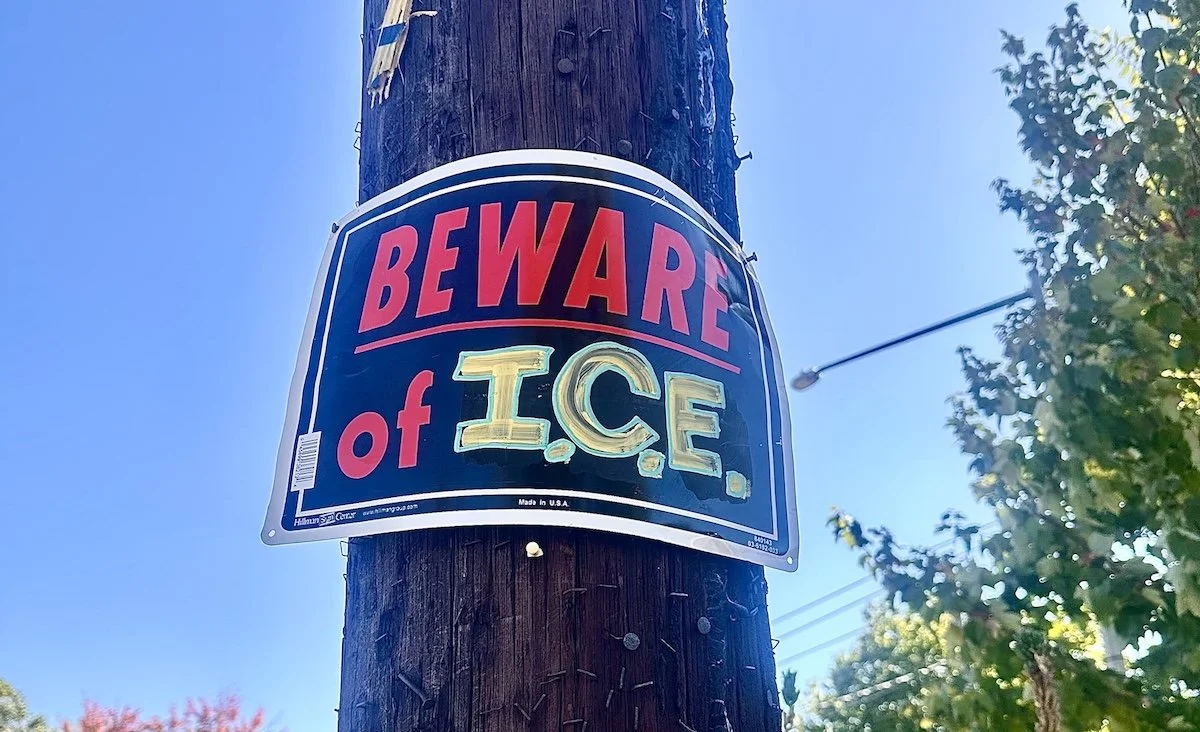Fall blooms in Petworth and shows off its many colors
/Flowers light up Lorenzo “Larry” Allen park
If you’ve found yourself walking around our beautiful neighborhood admiring the flowers and wondering what you’re looking at, we’re here to help. Welcome to "Petworth Blooming,” a popular series featuring some of the most common plants and flowers seen around Petworth. Follow and support Steve at PetworthBlooms.org and see more photos at @petworthblooms on Instagram.
Fall has officially arrived! Cooler weather makes it that much easier to get out and enjoy the neighborhood flowers, and there are plenty to look at right now.
Angelonia are a group of flowers from South and Central America and are sometimes called Summer Snapdragons. They are usually red, purple or white and do well in dry areas with lots of sun. The upright spikes of flowers last all summer, and the plants stay compact making them a good choice for smaller spaces.
Purple angelonia on 4th Street NW
Another good plant for dry, sunny spaces are Zinnias. These annuals originally come from the southwestern US and Mexico, so they have good drought tolerance. They can be grown from seed and come in a great variety of colors, heights and flower shape. The taller ones make for great cut flowers, while the shorter ones create an easy carpet of color for most of the summer.
Pink and orange zinnias in the rain gardens in Petworth Playground
If you like lots of petals in your flowers, then Dahlias are one to try. They can be easily grown from bulbs planted in the spring. There are tons of colors available, with a range of petal densities. These make good cut flowers for indoor displays.
A purple dahlia in the alley behind Petworth Playground
Marigolds are a cheap and easy to grow sun-loving annual, either from seed or seedling. Varying from yellow to red, the complex flowers provide compact blotches of color all summer long. These garden favorites originally came from Mexico.
Yellow marigolds and pink zinnias at the 4th & Buchanan Streets triangle park
Yellow and orange marigolds, plus petunias and salvia at Lorenzo “Larry” Allen park
Often planted along retaining walls and in curbside beds, Sedum (aka Stonecrop) is one tough plant. This succulent is able to withstand dry conditions by filling its leaves with water whenever moisture is available. Give it too much water and it will grow so tall that it can’t support its own weight.
Sedum on 9th Street NW
Black-Eyed Susans are a group of about five different species and their hybrids. Most are perennials, but one is an annual/biennial (and also the State flower of Maryland). Most will slowly spread to form large clumps, and also readily grow from seed.
Black-Eyed Susans in Grant Circle
Sticking with flowers in Grant Circle, Plains Coreopsis is a stunning annual or biennial with a very airy feel to it. It has small needle-like leaves and keeps an open, slender structure as it grows. It’s great for filling in small gaps between other plants. It has yellow petals with burgundy centers surrounding a button-like core of central flowers. These plants readily self-sow so they’ll keep coming back year after year.
Plains coreopsis in the center of Grant Circle
Another plant with excellent seed production is the Japanese Clematis. This aggressive vine is quite at home along alleys and fences or other semi-neglected areas. Its pungent white flowers are a sure sign that autumn is here. There are a number of showier clematis with red to blue flowers, but none as tenacious as this one.
Japanese clematis on the outside of Grant Circle
Crepe Myrtles mostly flower in July, but there are always a few stragglers. Originally from India, Southeast Asia and Oceania, these are some of the only trees to make flowers this late in the year. In addition to their delicate flowers, mature trees develop beautiful mottled bark. Pink, purple and white are the most common colors; some cultivars have dark purplish leaves as well.
A pink crepe myrtle at St Gabriel’s Church on Grant Circle
Crepe myrtle on 9th Street NW
If you’re looking for a bit of tropical flair, then the Canna Lily has got a lot to offer. Big bold leaves, and bright saturated blooms make this plant a big hit. Bulbs can be planted in late spring. The canna lily isn’t actually a lily; the closest relatives of these plants are gingers and bananas.
Canna lily on 4th Street NW
Gerber Daisies are a hybrid of two different daisy species from South Africa and are commonly used as cut flowers. They come in lots of different colors and sizes, but are generally small enough to be grown in pots. These daisies can survive a mild winter in our region, but usually do best treated as annuals.
Red and yellow Gerber daisies along Illinois Avenue NW
So what's blooming next in Petworth? We’ll talk about that next time!





























